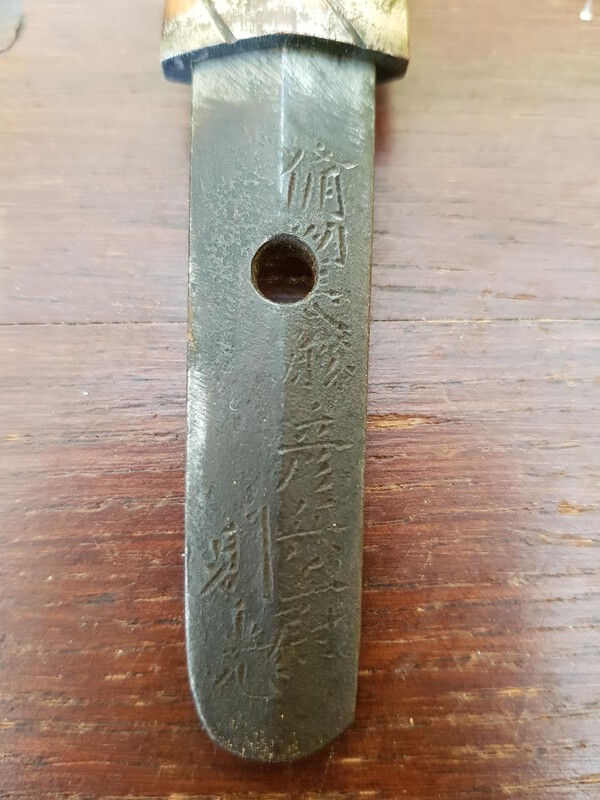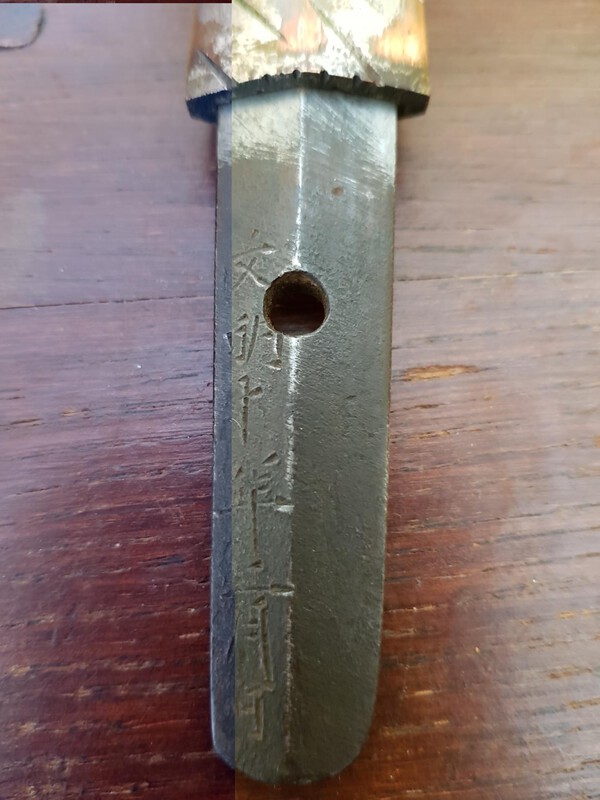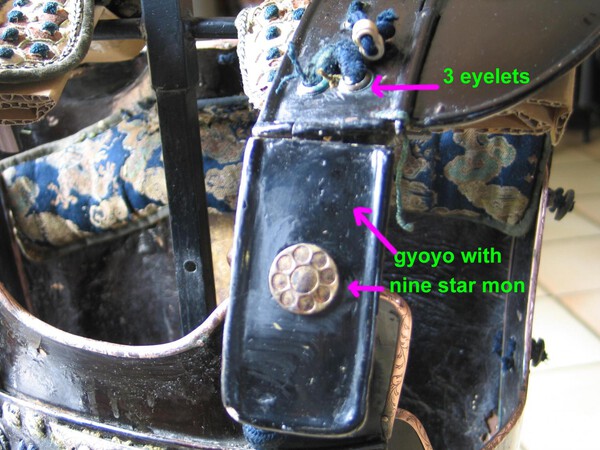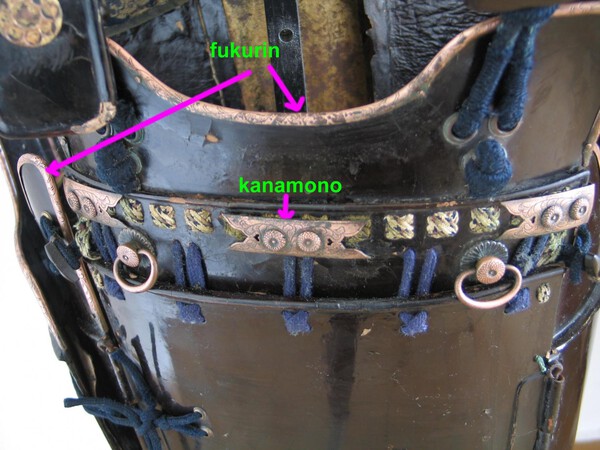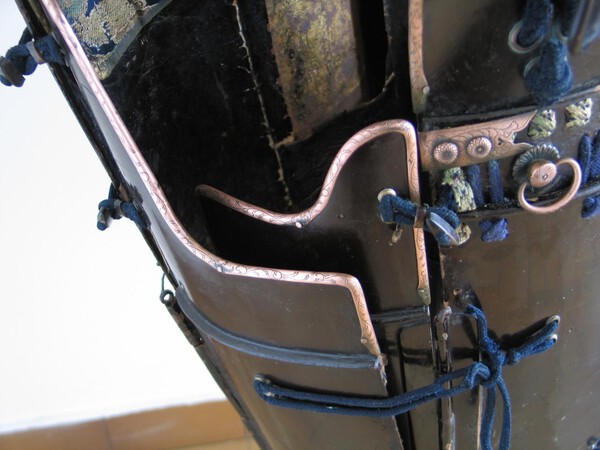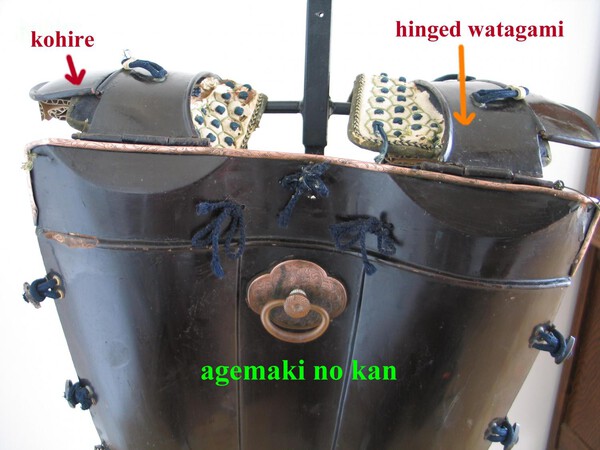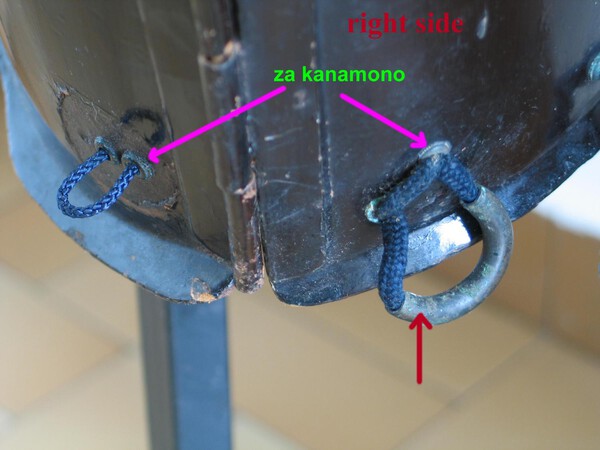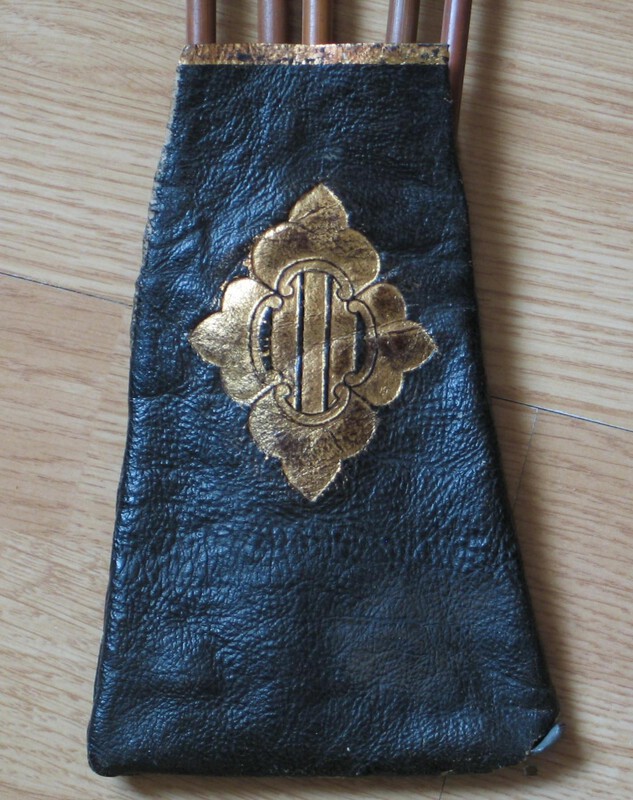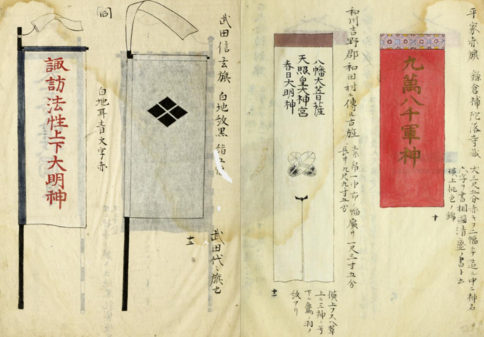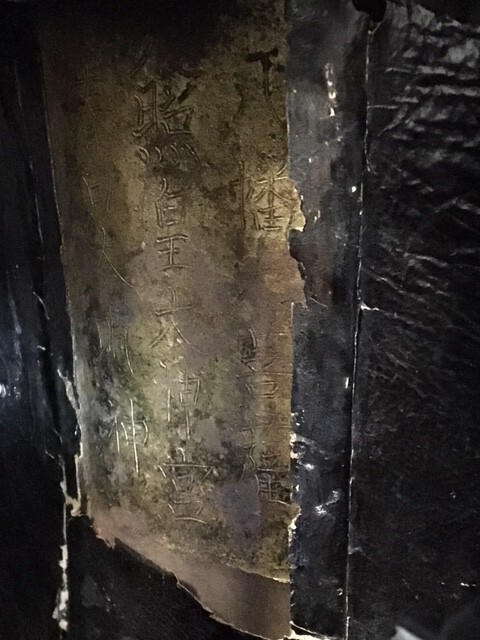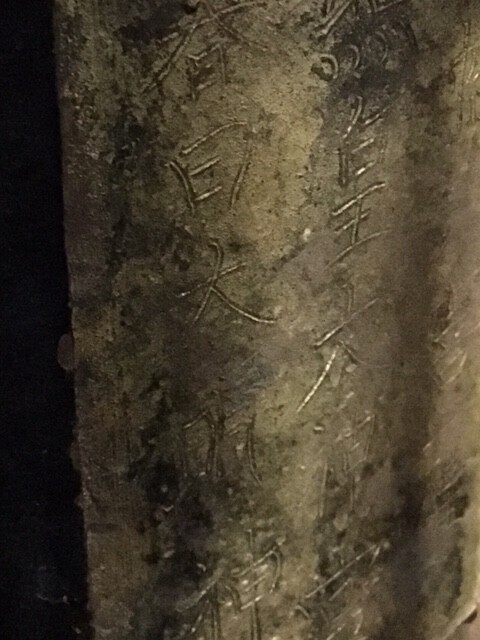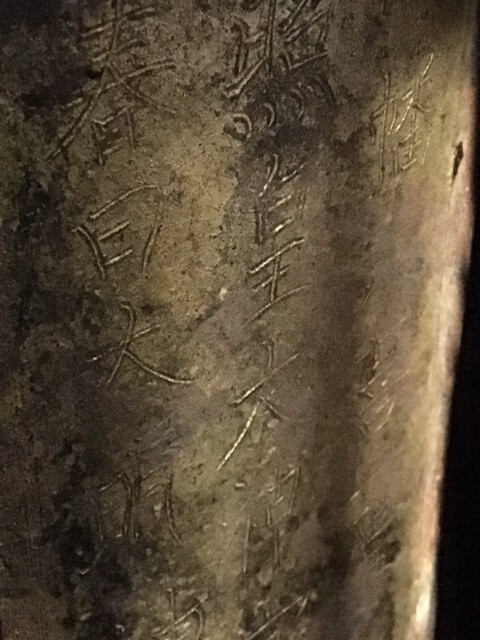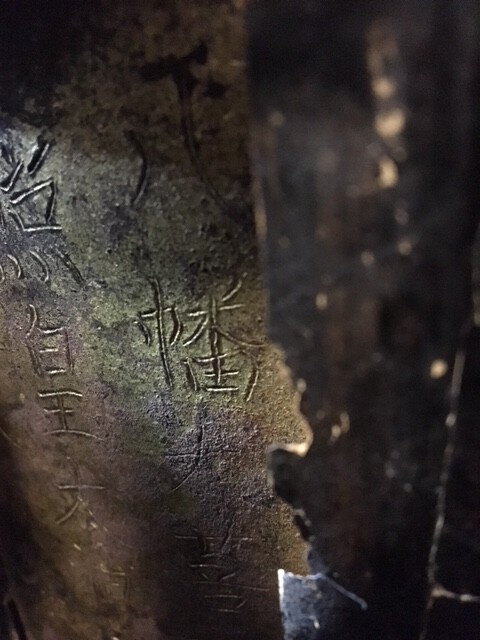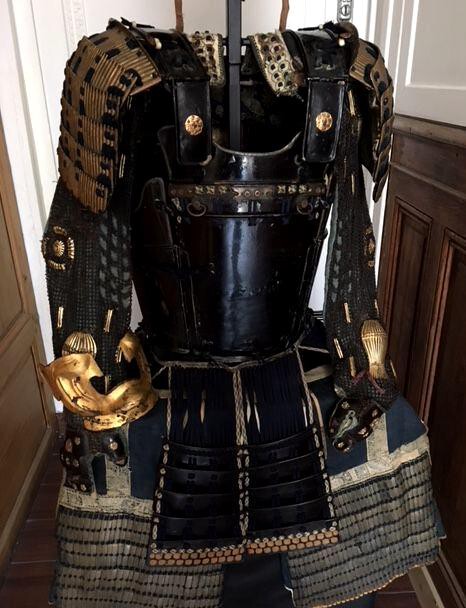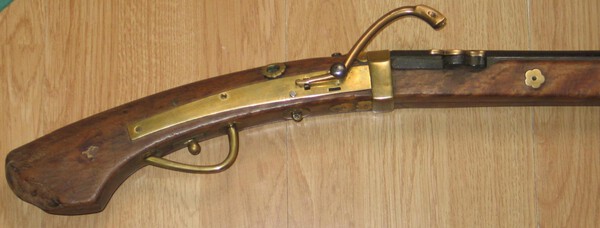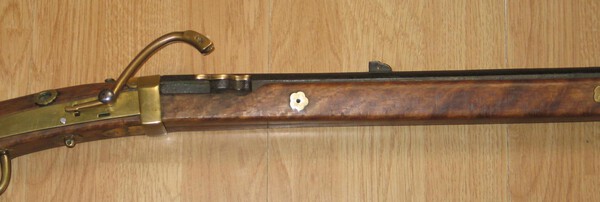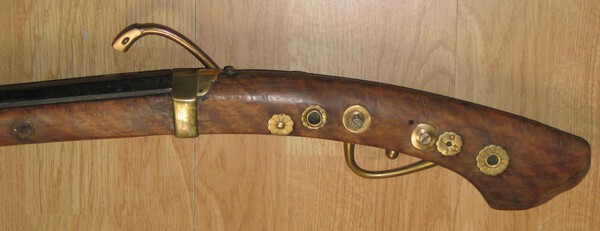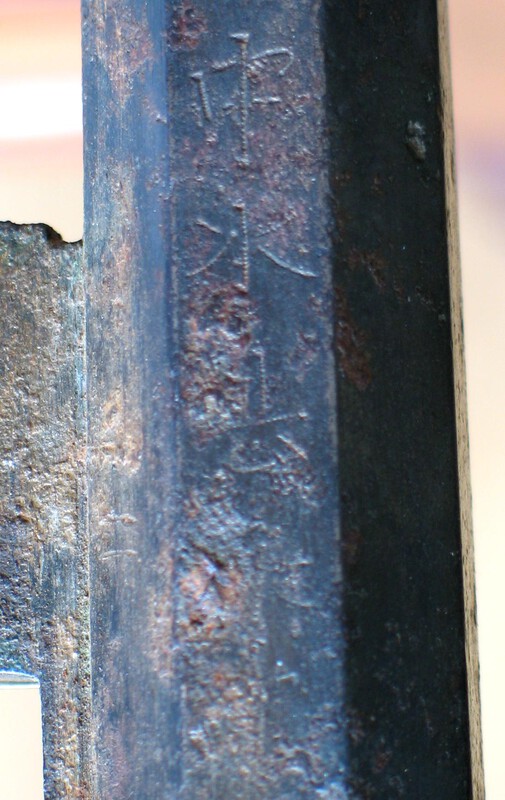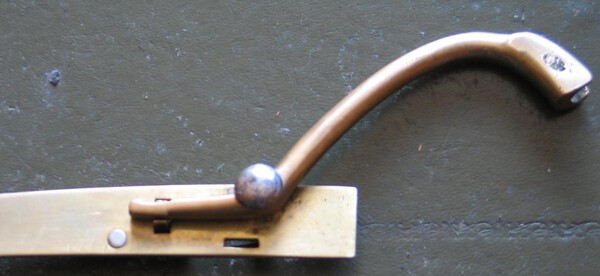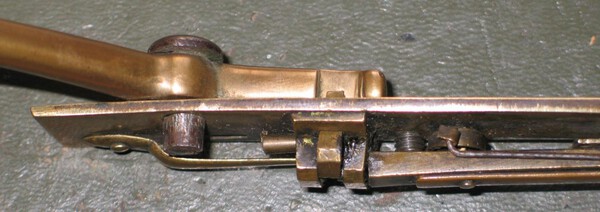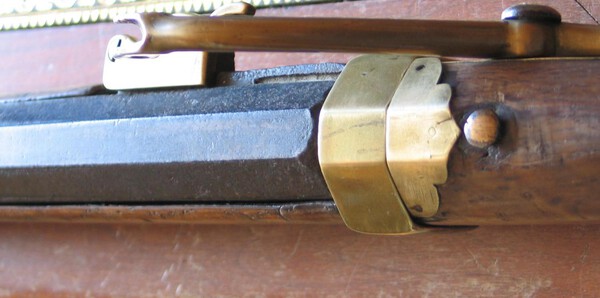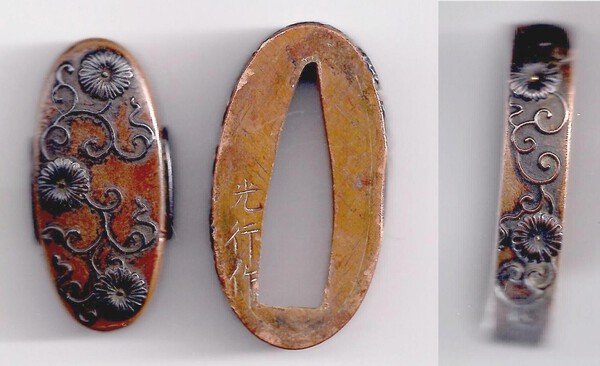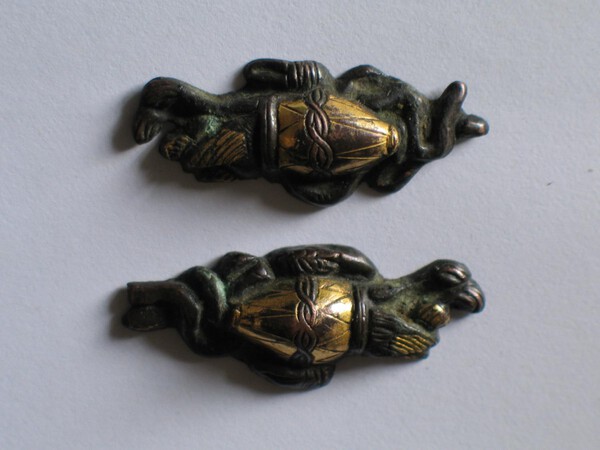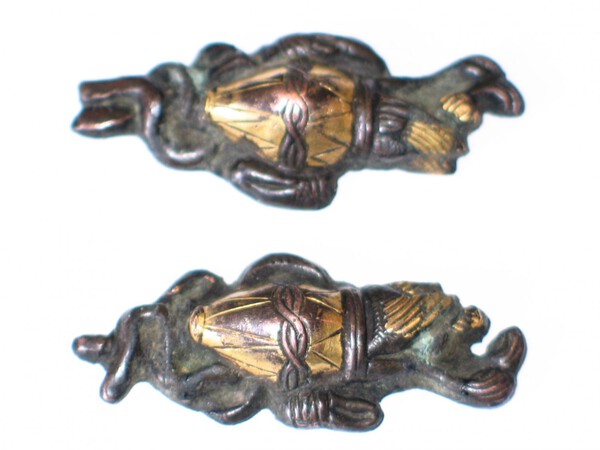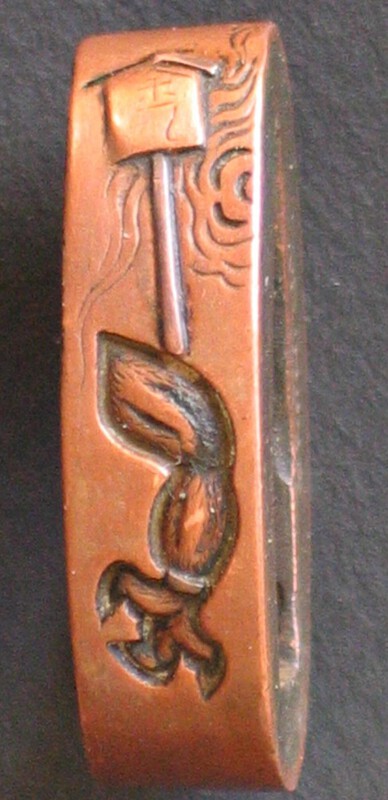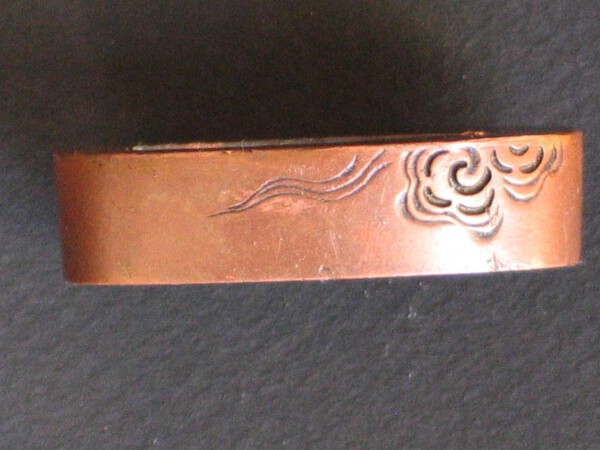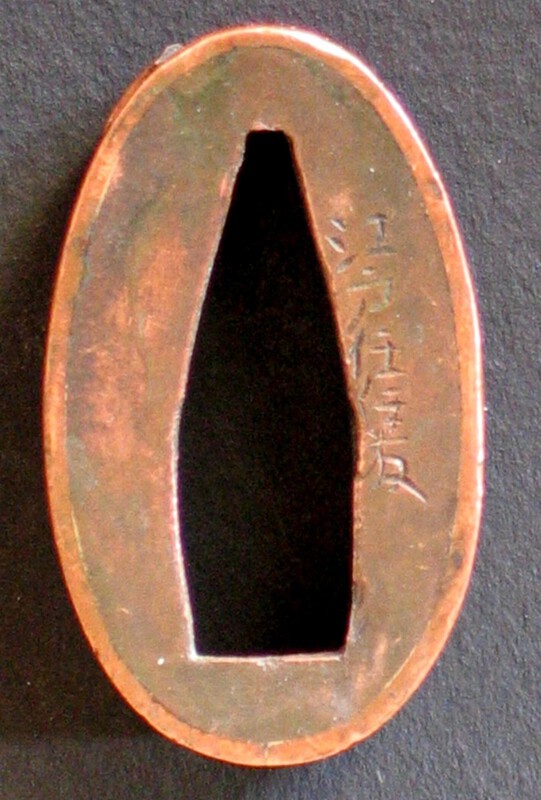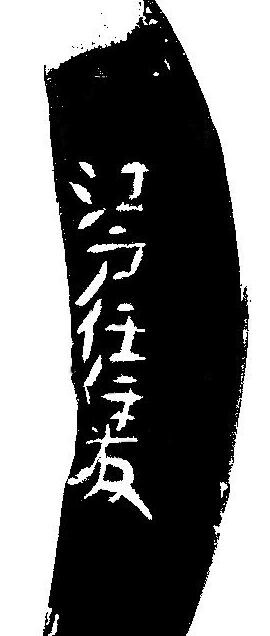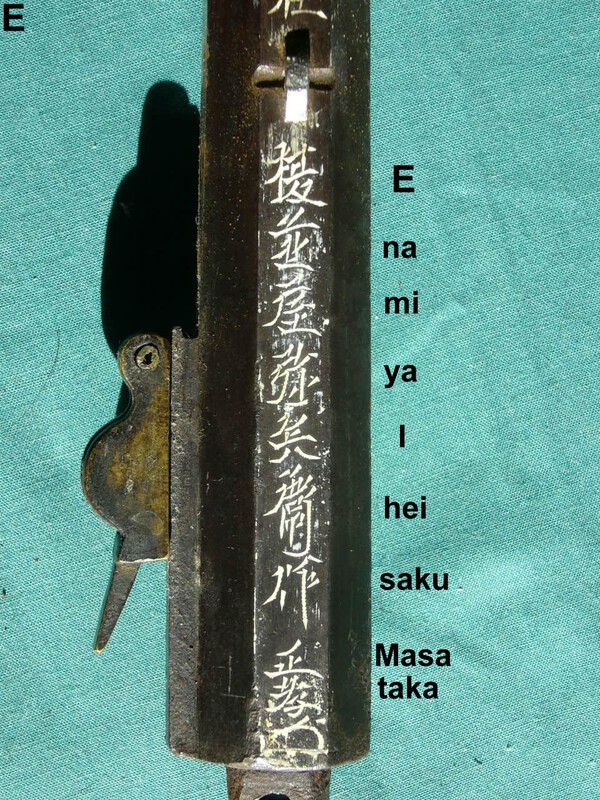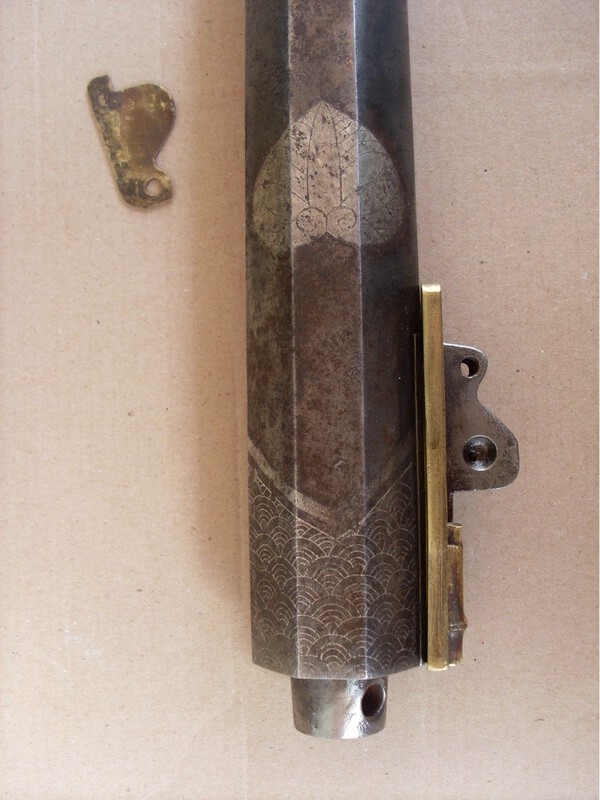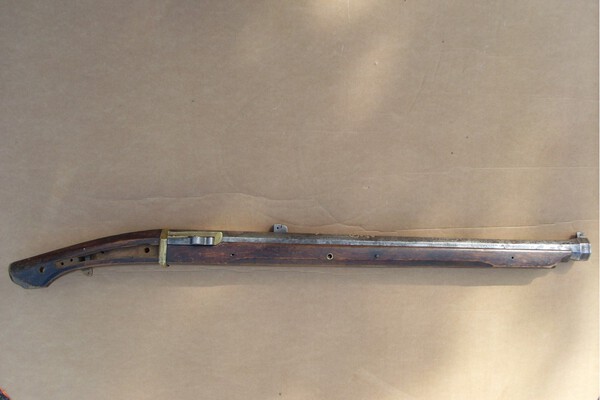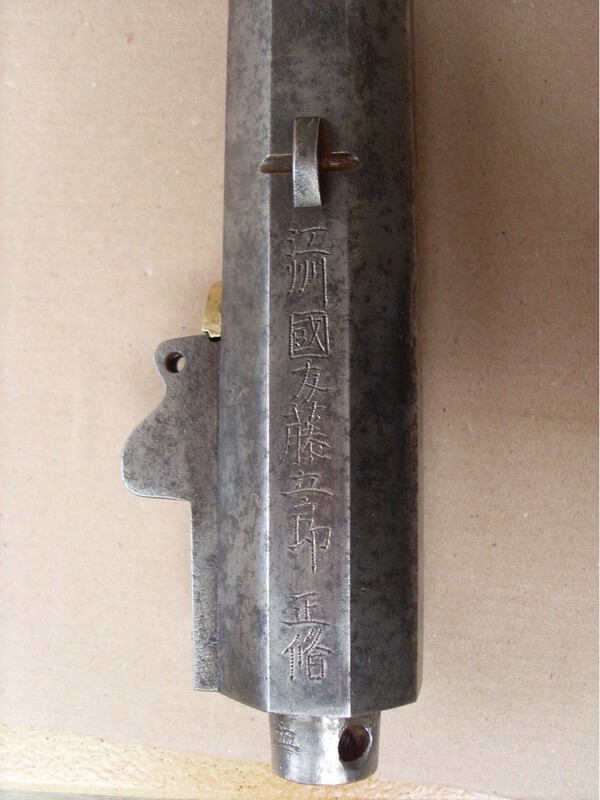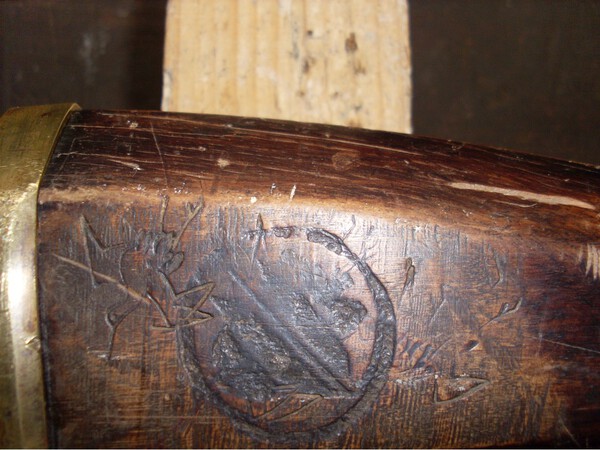
Yamazakura Fr
Members-
Posts
48 -
Joined
-
Last visited
Everything posted by Yamazakura Fr
-
-
Hello Someone offers me a tanto with this signature I have translate with: Bishu Osafune Hikobei jo Norimitsu Bunmei ju nen ni gatsu hi what do you think about this? Regards
-
Hello To restore one shiko ebira I need the dimensions of the top plate (see pic) Length, width, thickness What is his material ( brass, leather ??) Thank you
-
Very thanks for your answer To complete this post some pictures of the Dö you can see the watagamie with a hinge on the back, a gyoyo on the front (with a 9 star mon) and a kohire on the outer edge. Kanagu mawari with fukurin. The breast plate carries 3 kanamono. In the back a ring agemaki no kan. All eyelets are za kanamono. The 8 kusazuri with yurigi ito. All the interior is covered with a thin black lacquered leather except the part with the 3 invocations Weight without kusazuri 6,5 kg One question can anyone say me what is the great laced loop with half brass ring in the back of the right side ( it's bigger than the other kusazuri suspensions loops) see the last pic red arrow What do you think about the Gosoku signed Yukinoshita of the Metropolitan Museum of Art (with muneita laced on to the front plate) Regards
-
Hello I am not sure if it is the right place for this ? I have found In an old collection made in the 1930s, one bow (black and red) with 5 arrows. These are in a small black leather bag with a gold mon ? on each side. What do you think ? Regards
-
Thank you After some research I found this in wikipedia "Hachiman In Japanese beliefs, Hachiman (八幡神 Hachiman-jin/Yahata no kami) is the syncretic divinity of archery and war, incorporating elements from both Shinto and Buddhism.Although often called the god of war, he is more correctly defined as the tutelary god of warriors. He is also the divine protector of Japan, the Japanese people and the Imperial House, the Minamoto clan ("Genji") and most samurai worshipped him. The name means "God of Eight Banners", referring to the eight heavenly banners that signaled the birth of the divine Emperor Ōjin. His symbolic animal and messenger is the dove. Daibosatsu (大菩薩 'great bodhisattva' ) Kasuga Grand Shrine (春日大社 Kasuga-taisha) is a Shinto shrine in the city of Nara, in Nara Prefecture, Japan.[1] Established in 768 CE and rebuilt several times over the centuries, it is the shrine of the Fujiwara family. The interior is famous for its many bronze lanterns, as well as the many stone lanterns that lead up the shrine. Myōjin (明神 'shining deity', 'illuminating deity', or 'apparent deity' or Daimyōjin (大明神 'great shining/apparent deity') was a title historically applied to Japanese (Shinto) deities (kami) and, by metonymy, their shrines.The term is thought to have been derived from myōjin (名神 'notable deity'), a title once granted by the imperial court to kami deemed to have particularly impressive power and virtue and/or have eminent, well-established shrines and cults. This term is first attested in the Shoku Nihongi, where offerings from the kingdom of Bohai (Balhae) are stated to have been offered to "the eminent shrines (名神社 myōjin-sha) in each province" in the year 730 (Tenpyō 2) Amaterasu-ōmikami (天照大神/天照大御神/天照皇大神), is a deity of the Japanese myth cycle and also a major deity of the Shinto religion. She is seen as the goddess of the sun and the universe. The name Amaterasu is derived from Amateru and means "shining in heaven". The meaning of her whole name, Amaterasu-ōmikami, is "the great august kami (deity) who shines in the heaven". According to the Kojiki and Nihon Shoki in , the Emperors of Japan are considered to be direct descendants of Amaterasu. Another interesting thing: we find these same three invocations on an old war banner (the one with the two crossed feathers, the second from the right) What do you think ? It's possible to date this yoroi ? Regards
-
Thank you, but what does it mean ?
-
Hello Can anyone identify this Yukinoshita armor especially the signature found inside on a plate without lacquer I think Shoshu province ? Thank you Regards
-
Teppô Identification
Yamazakura Fr replied to Yamazakura Fr's topic in Tanegashima / Teppo / Hinawajū
Thank you for your answer Effectively there are 5 kanji but the rust makes it very difficult to read the three last kanji (I think the last for Saku?). Can you give me the mei of the 7 listed Nakamitzu gunsmiths to help me with these kanji -
Hello I just found this one Total lenght 125,5 cm, barrel lenght 96 cm, caliber 5 mome (14,6 mm) This was restored with some iron screws (modern) The barrel has no decors or inlay, it present old rust attack, The mei has only 3 kanji but I can't translate this The lock have no spring and present one iron screw but the other parts seem correct What do you think ? Can you identify the mei, the type (I think Sakai ?) and what old is it Thank you for all Regards
-
Hello I have this copper fuchi-kashira with silver kiku inlay, signed Mitsuyuki saku what school ? Thank you Regards
-
Hello I have this pair of menuki but I don't know what does it represent Can anyone help me Thank you Regards
-
Fuchi Kashira Mei Identification
Yamazakura Fr replied to Yamazakura Fr's topic in Translation Assistance
Hello Thank you very much for your answer About the sign kinsatsu I think the mistake comes from that the kanji 金 and 禁 have the same pronunciation kin but in 金 kin is for gold and 禁 for forbiden In the two vertical diptychs by Yoshitoshi there is a same mistake in the first we can read 金札 and on the second 禁札) -
Hello I have this copper Fuchi-kashira with mei but I have problem to translate the two last kanji I read EDO No ju and perhaps Tomo ? What symbolize the figure of this koshira ? Thank you for your help Regards Bernard
-
Hello I have one kogatana with this long mei can anyone help me for translate this mei Thank you Regards Bernard
-
-
Hello I have this blade with one mei I have translate two kanji ( kanesada) but the first no Can you help me ? Thank you regards
-
Hello I have one four seasons silk painting with this signature can anyone help me ? Thank you Regard
-
Goshu Kunitomo Teppô. What Gunsmith ?
Yamazakura Fr replied to Yamazakura Fr's topic in Tanegashima / Teppo / Hinawajū
Thank you Piers for your reply I add this pics of top barrel and kamon total length 104 cm barrel length 75 cm Regards Bernard -
Goshu Kunitomo Teppô. What Gunsmith ?
Yamazakura Fr posted a topic in Tanegashima / Teppo / Hinawajū
Hello Can you help me for translate the name of the gunsmith of this Kunitomo teppô (without lock) I read on the barrel this kanji 1 Go 2 Shu 3 Kuni 4 Tomo 5 Fuji (To) 6 ? 7 ? 8 Masa 9 ? And on the stock O shima Yoshi Bei Munemasa On the left side of the buttstock we can see three engraved stylized cranes Thank you for your help Regards Bernard



